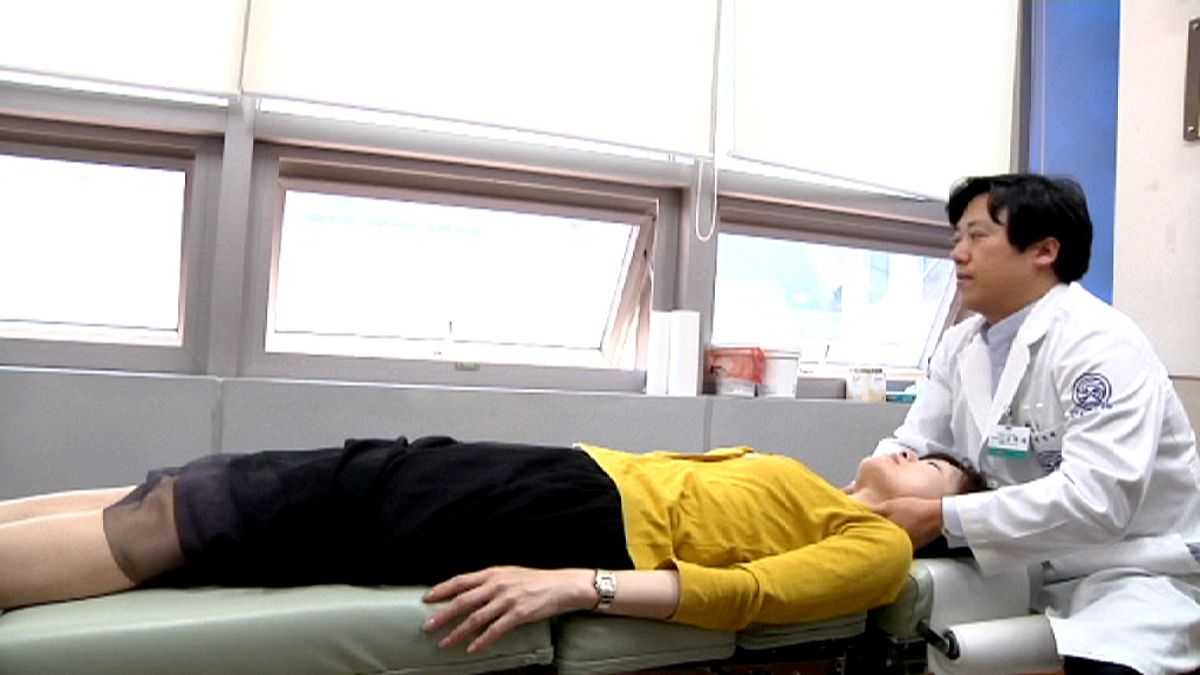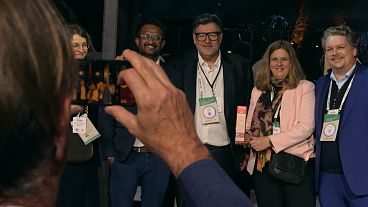South Korea has been making a huge effort over the past few years to develop medical tourism as one of its new growth industries.
To make life easier for foreign visitors, information centres have been set up to offer advice and guidance to a growing number of foreign patients (mainly from Japan, China and Russia), who come to South Korea in search of all manner of medicinal marvels.
“We help about 60 foreign patients per day, which means that there were more than 12,000 in our first year of business. They ask for very diverse treatments, from cosmetic surgery to traditional medicine,” explains Ki Rip Park, from a Medical Tourism Information Centre in Busan.
In Seoul, business at the Jaseng Hospital of Eastern Medicine is booming. It specialises in non-surgical spine treatments and has an international clinic to accommodate its foreign patients, with translators on hand to help out.
Naoko, from Japan, suffers from severe back pain and has become a regular here. She gets Chuna therapy, as well as a mixture of electric stimulation acupuncture and herbal medication.
Naoko Kawaragi, a medical tourist told euronews: “Sometimes I cannot walk, I cannot stand, I cannot stretch. I started coming here two years ago. Now I come here every three months and I stay for three days. Before I couldn’t even walk.”
Treatments combine old and new – East and West – a medical fusion that allows new treatments to develop, attracting an increasing number of Westerners along the way.
“We have cooperation between Western medicine and traditional medicine, which means we use western medicine mostly for diagnosis, to get the objective data about the condition of the patient. The treatment on the other side is more the traditional way, so we combine the best of each side for the best of each patient,” said Raimund Royer, from the Jaseng International Clinic.
A Korean “traditional” hospital can be a surprising experience for a foreigner. A typical dispensary in Seoul has 500 plant, mineral and animal parts in stock, to make up herbal medications.
Kathleen Freed, a foreign patient, uses herbal medication to ease her back pain.
“I’m taking herbal medicine every day, which tastes terrible, but the effect is that it’s going to help my ligaments become strong again because at the moment my ligaments are very weak and this is why my disc keeps slipping out,” she said.
Raimund Royer, Jaseng International Clinic described the benefits of herbal medication: “There’s no other Western allopathic (conventional) drug which can all in one reduce pain, reduce inflammation and at the same time regenerate tissue, and that is scientifically proven,” he said.
The matter remains controversial but the effects of herbal medication continue to be tested. Professor Hocheol Kim for example, from the Kyung Hee University in Seoul, has been working for two years looking for the right combination of plant extracts to combat the effects of strokes.
“Everyday 300,000 brain cells die. That’s why we suffer from Alzheimer’s, Parkinson’s disease, or paralysis. There’s still no totally effective treatment, and that’s what we are looking for,” he explained.
However, traditional Korean medicine is not just about herbs; acupuncture also plays a big part. At university, students study anatomy from Western books whilst practicing ancestral techniques in a modern way. With about 60 students per class, they have a year to learn acupuncture points and meridians. The next step is putting it all together.
Acupuncture doctor Hyangsook Lee explained: “Officially there are 361 acupuncture points, which belong to 40 main meridians, and there are many other extra acupuncture points, and I would say that our body is covered with acupuncture points.”
With a medical heritage based on acupuncture and herbal treatments, complimented by Western medicine, the future of traditional Korean medicine looks to be a force to be reckoned with. The aim now is to expand its use outside the country’s geographical borders.



